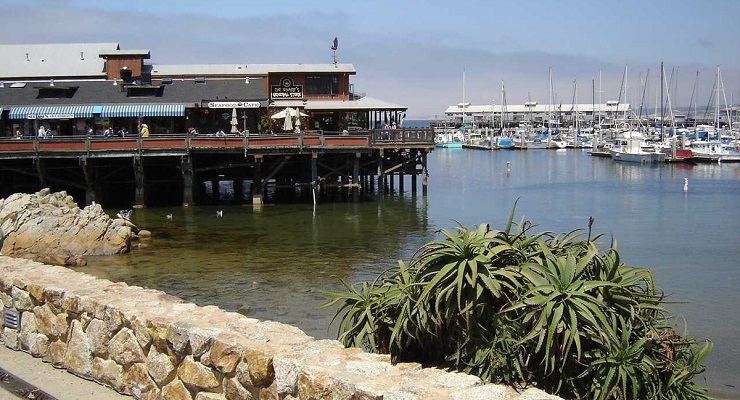
A representative shutout reflects problems with the scale and structure of California democracy.
Monterey County is home to Big Sur, Carmel, a world-class aquarium, the planet’s most beautiful golf course, half of America’s lettuce, and more than 437,000 people.
But Monterey County isn’t home to even one member of the California state legislature.
The county’s lack of representation isn’t just a local story. It challenges the national narrative, advanced by leading Democrats and progressives, that our state is a leader in diversity and representation. It reminds us that Californians are more distant from their elected representatives, and from the ideals of democracy, than other Americans. And it exposes the failure of California’s highly touted, voter-approved political reforms—like the top-two system of candidates, or our independent redistricting commission—to improve representation.
Because California’s supposedly democratic reforms have left a place as big and important as Monterey County without any state representation from one of its own.
That fact is the result of California’s extreme stinginess in democratic representation. The average American state legislative district has about 100,000 people. But California hasn’t increased the size of its legislature since 1879, when the state had fewer than 1 million people. So, we have by far the most populous legislative districts in the U.S. State Senate districts have nearly 1 million residents each, and Assembly districts have 500,000.
Monterey County has fewer people than that, which opens up the mathematical possibility of not having a single resident in the legislature.
The county, of course, has people who represent it, but they live in neighboring counties.
John Laird of Santa Cruz is the state senator in a massive district that covers not just Monterey County but parts of Santa Clara to the north, and half of San Luis Obispo County to the south.
In the Assembly, a politician from San Luis Obispo County—former Morro Bay city councilmember Dawn Addis—now represents western, coastal Monterey County, including Monterey Bay, which is 103 miles north of her home. Her district actually extends north into Santa Cruz and south to Santa Maria, the Santa Barbara County seat.
California’s supposedly democratic reforms have left a place as big and important as Monterey County without any state representation from one of its own.
The eastern half of Monterey County is represented by the powerful Robert Rivas, who is expected to become Assembly speaker in June. California media routinely identify him as a Democrat from Salinas, where he has set up a district office.
But Rivas is actually a life-long resident of San Benito County. His official bio is a love letter to San Benito County places—he was raised in Paicines (where his grandfather was a farmworker at Almaden Vineyards), attended public schools in San Juan Bautista, and lives with his family in Hollister.
Ironically, the state legislator with the deepest Monterey County ties, Senator Anna Caballero, a former Salinas mayor, doesn’t represent the county. The redistricting commission pushed her district east, into the Central Valley.
California’s much touted independent redistricting commission is not supposed to consider the residences of existing politicians when it draws up districts. But it is supposed to keep together “communities of interest.” Monterey County is surely a community of interest.
Indeed, Monterey County’s exclusion should remind us just how narrow our conception of representation has become.
The redistricting commission’s chief concerns with representation are racial and ethnic—under voting rights laws, it works hard to make sure there are seats likely to elect Black or Latino politicians. But our system doesn’t consider other kinds of representation. We have no provisions to guarantee gender parity, or for adequate representation of Californians of different ages, classes, education levels, or national origins.
Indeed, our system doesn’t even guarantee that you’ll have a representative from the county in which you live. Other, smaller counties in California, mostly in the North State and in the Sierra, are also without a resident representative.
Top of Form
This is why Los Angeles and other scandal-plagued California cities are wasting their time when they seek to improve representation through the creation of local independent redistricting commissions. No redistricting body can overcome the problems of a system with districts that are bigger than even some of our bigger counties.
California needs to reorganize the scale and structure of its legislative maps. It needs a legislature with more districts that are much smaller. At minimum, districts one-tenth as populous as today’s monstrously large ones—say 50,000 people instead of 500,000 for Assembly seats, and 100,000 instead of 1 million for the Senate.
But such a change would be hard to sell because it would increase the size of the legislature 10 times—with 800 people in the Assembly and 400 in the Senate. And even adding more seats wouldn’t guarantee better representation. To achieve gender parity and other forms of representation, the state would need multi-member districts in which Californians vote for party lists of candidates, which would be required to include a 50-50 gender split and candidates from other currently underrepresented demographics.
Like people from Monterey County.
This article appears in Zócalo Public Square.
Leave a Reply